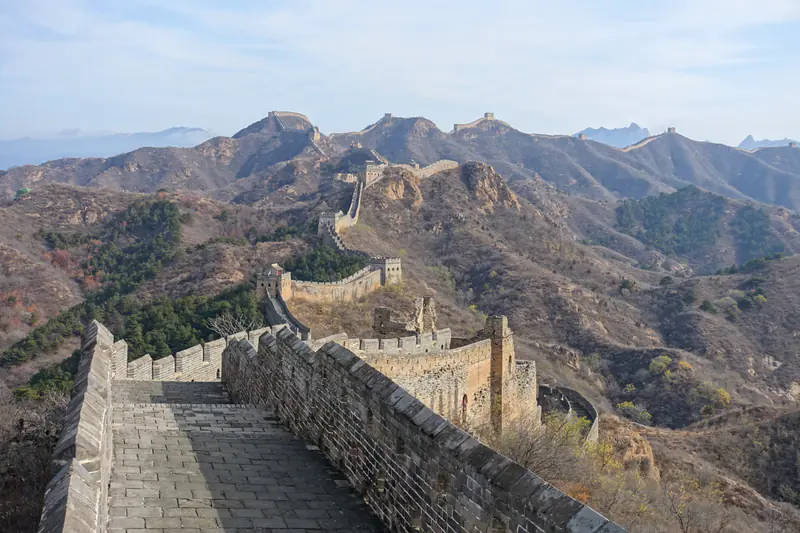UNESCO World Heritage Sites in China
Heritage Overview
China's UNESCO World Heritage sites represent one of the world's most extensive collections of cultural and natural treasures, encompassing over 5,000 years of continuous civilisation, extraordinary biodiversity, and remarkable geological formations. The country preserves exceptional examples of imperial architecture, ancient defensive systems, religious monuments, and classical gardens alongside natural wonders found nowhere else on Earth. Ancient palaces, temples, and ceremonial complexes demonstrate sophisticated architectural traditions, philosophical principles, and the power of successive dynasties that ruled vast territories. Classical gardens showcase refined aesthetic principles and human-nature harmony concepts central to Chinese philosophy. Archaeological sites preserve evidence of early human evolution and technological innovations including bronze casting, silk production, and ceramic arts. Revolutionary engineering achievements like ancient irrigation systems and defensive structures illustrate sophisticated planning and massive labour organisation. Natural sites protect unique ecosystems with endemic species including giant pandas, golden monkeys, and Tibetan antelopes across diverse landscapes from karst formations to high-altitude plateaus. These areas demonstrate ongoing geological processes, remarkable biodiversity, and scenic beauty. Together, China's heritage reflects the depth and continuity of one of humanity's oldest civilisations whilst preserving exceptional natural environments critical for global biodiversity conservation.
Essential Information
Visa Requirements
Most foreign visitors require visas obtained before arrival from Chinese embassies or consulates, or through visa application centres. Tourist (L) visas are typically valid for 30 days with single or double entry, though longer validity is sometimes granted. Applications require invitation letters, hotel bookings, and flight confirmations. Processing takes approximately one week but can be expedited. Some cities including Beijing, Shanghai, and Guangzhou offer 72-144 hour visa-free transit for certain nationalities with onward tickets. Hainan offers 30-day visa-free entry for some countries. Passports must be valid for six months with blank pages. Hong Kong and Macau have separate entry requirements.
Currency
The official currency is the Chinese Yuan Renminbi (CNY), with strict capital controls limiting international transactions. Mobile payment systems WeChat Pay and Alipay dominate transactions, though foreign visitors face setup challenges requiring Chinese bank accounts. Credit cards (Visa, Mastercard) are accepted in international hotels and upscale establishments but rarely elsewhere. ATMs are widespread in cities, accepting international cards with daily limits around 2,500 CNY and fees. Cash remains necessary for smaller businesses, markets, and rural areas. Bring sufficient cash or arrange mobile payment access before arrival. Currency exchange is available at banks, airports, and authorised offices. Keep exchange receipts.
Language
The official language is Mandarin Chinese (Putonghua), written with Chinese characters (Hanzi). English proficiency is limited outside international hotels, tourist areas, and major cities. Younger generations in cities have basic English, whilst rural areas have minimal English speakers. Tourist sites increasingly provide English signage and information. Translation apps are essential for navigation, ordering food, and communication. Cantonese dominates in Guangdong province and Hong Kong. Numerous regional dialects exist, often mutually unintelligible but sharing written characters. Learning basic Mandarin phrases (Nǐ hǎo for hello, Xièxie for thank you) and having addresses written in Chinese characters facilitates travel significantly.
Climate
China's vast geography creates diverse climates across regions. Northern China experiences continental climate with cold, dry winters (December-February) dropping well below freezing and hot summers (June-August) exceeding 35°C. Southern regions feature subtropical to tropical climates with hot, humid summers and mild winters. Central China has four distinct seasons with monsoon rains in summer. The Tibetan Plateau endures harsh high-altitude conditions year-round. Spring (April-May) and autumn (September-October) offer ideal conditions for most regions, with comfortable temperatures and manageable rainfall. Summer brings intense heat and humidity, particularly south, whilst winter suits southern regions but challenges northern travel.
